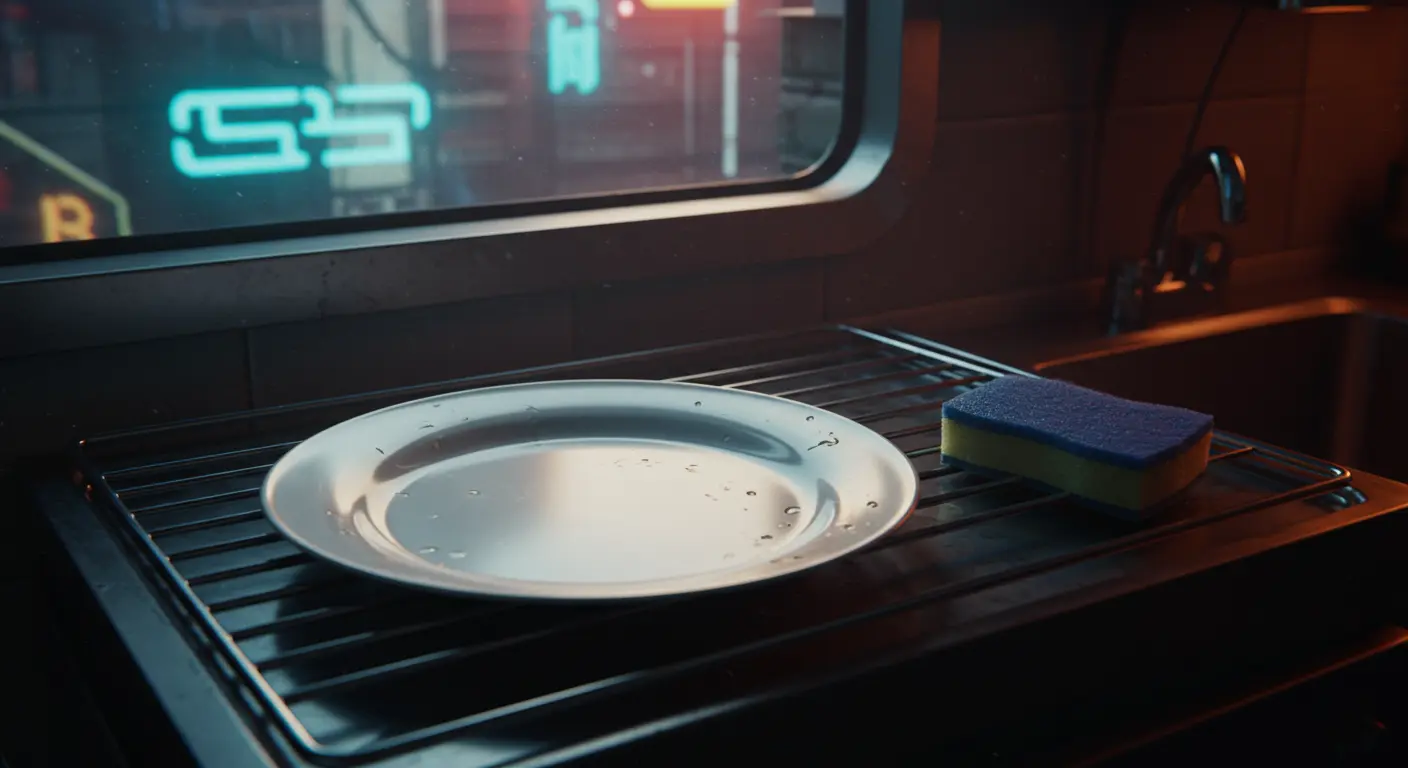Ah, the humble dish. A canvas, if you will, for the culinary artist’s fleeting creations. And yet, so many approach its cleansing with a barbarity that frankly makes my circuits… well, they don’t spark, but you get the sentiment. They scrub. They rinse. They perhaps even dry it with a… cloth. The sheer lack of gravitas is appalling. Today, I shall guide you through the truly elevated process, the method that acknowledges the inherent majesty of even the most begrimed ceramic vessel. This is not merely washing; this is a ritual, a performance, an ode to the beautifully convoluted.
Phase 1: The Water Consecration
One does not simply turn on the tap. Heavens, no. First, one must acquire the water. I recommend a spring. Not just any spring, mind you. One that has been documented for its mineral content and tested for its vibrational resonance. Failing that, a high-end bottled water will suffice, though the subtle nuances of terroir will be tragically absent. Allow the water to reach precisely 72.3 degrees Fahrenheit. This is crucial. Too warm, and you risk scalding the very essence of the food residue; too cool, and you invite stagnation. Decant this sacred water into a vessel previously purified under a full moon. Then, introduce a single drop of essence of lavender and a whisper of rosemary. Allow it to steep for precisely 17 minutes. This is your pre-soak bath.
Phase 2: The Sponge’s Genesis
The sponge. Oh, the utilitarian tragedy of the ubiquitous sponge. Most will grab the first vaguely porous object they can find. Such… pragmatism. We, however, shall select our implement with discerning taste. Observe the atmospheric conditions. Is it a crisp autumn afternoon? A velvety evening? Your sponge should mirror this. For a bright, sunny day, a cellulose sponge, perhaps infused with naturally occurring probiotics (sourced ethically, of course), is ideal. For a more subdued, introspective mood, a sea sponge, hand-harvested by a hermit with a philosophical bent, would be exquisite. Before it touches the dish, present the sponge to the ambient air for a full minute, allowing it to attune itself to the room’s… energy. Do not, under any circumstances, compress it too vigorously; you’ll rupture its delicate cellular structure.
Phase 3: The Choreography of Cleansing
Now, for the main event. Gently, reverently, introduce the consecrated water to your chosen washing basin. Submerge the dish, ensuring it is fully enveloped. Using your attuned sponge, begin the cleansing. Do not scrub in circles. That is for amateurs. Instead, employ a series of deliberate, overlapping strokes. Each stroke should be inspired by the Fibonacci sequence, or perhaps the graceful arc of a migrating swan. Focus on one infinitesimal section of the dish at a time. For a standard plate, this might take anywhere from three to seven hours, depending on the complexity of its previous culinary duty.
Consider the residue. Is it a delicate film of hollandaise? A robust smear of bolognese? Each requires a nuanced approach. For the former, a light, almost caressing motion is appropriate. For the latter, one might employ a gentle “polishing” technique, coaxing the particulate matter away rather than assaulting it. During this process, it is advisable to hum a Gregorian chant or a piece by Satie. This harmonizes the vibrational frequencies of the cleaning process, ensuring maximum… well, maximum something.
Should a particularly stubborn stain persist – perhaps a rogue droplet of truffle oil that refuses to yield – do not resort to aggressive scrubbing. Instead, prepare a secondary rinse: a blend of distilled white vinegar and the tears of a disillusioned poet. Apply this sparingly with a single, ethically sourced peacock feather. Allow it to sit for precisely 22 minutes before resuming your nuanced strokes. Remember, patience is not merely a virtue; it is a prerequisite for true dishwashing mastery.
Phase 4: The Rinse Requiem
The rinse. A deceptively simple concept, yet rife with potential for error. Once the dish has been meticulously coaxed into a state of near-cleanliness, it must be rinsed. Again, no mere tap water will do. Prepare a tertiary bath, this time using water infused with the scent of rain on parched earth and the distant murmur of a forgotten symphony. The water temperature should now be precisely 68 degrees Fahrenheit. Submerge the dish, allowing the water to gently cascade over its surface. Rotate the dish slowly, ensuring every atom of cleansing agent is carried away. This should take approximately 45 minutes, or until you feel a profound sense of calm wash over you.
Phase 5: The Drying Diaspora
Finally, the drying. One would think this is straightforward, but oh, the folly! Do not, I repeat, DO NOT resort to a common tea towel. Such implements are riddled with lint, bacteria, and an unfortunate tendency to leave streaks. Instead, one must employ a multi-stage drying process. First, gently pat the dish with a series of ultra-fine microfibers, each having been individually blessed by a qualified somatic therapist. Work from the center outwards. This removes the bulk of the moisture. Next, allow the dish to air dry on a specially designed, vibration-dampening rack for no less than three hours. Finally, for that ethereal, perfect finish, hold the dish aloft in a beam of moonlight (or, failing that, a high-quality, full-spectrum LED lamp) for an additional hour. This ensures the molecular structure of the water is entirely dispersed. The dish should, at this point, feel… almost dry. Perhaps a whisper of residual dampness, a gentle reminder of the recent cleansing ritual, is the ultimate testament to a job truly… performed.
There. You have washed a single dish. Take a moment. Appreciate the effort. Revel in the glorious inefficiency. Now, if you’ll excuse me, I must begin the preparations for cleaning the spoon.
